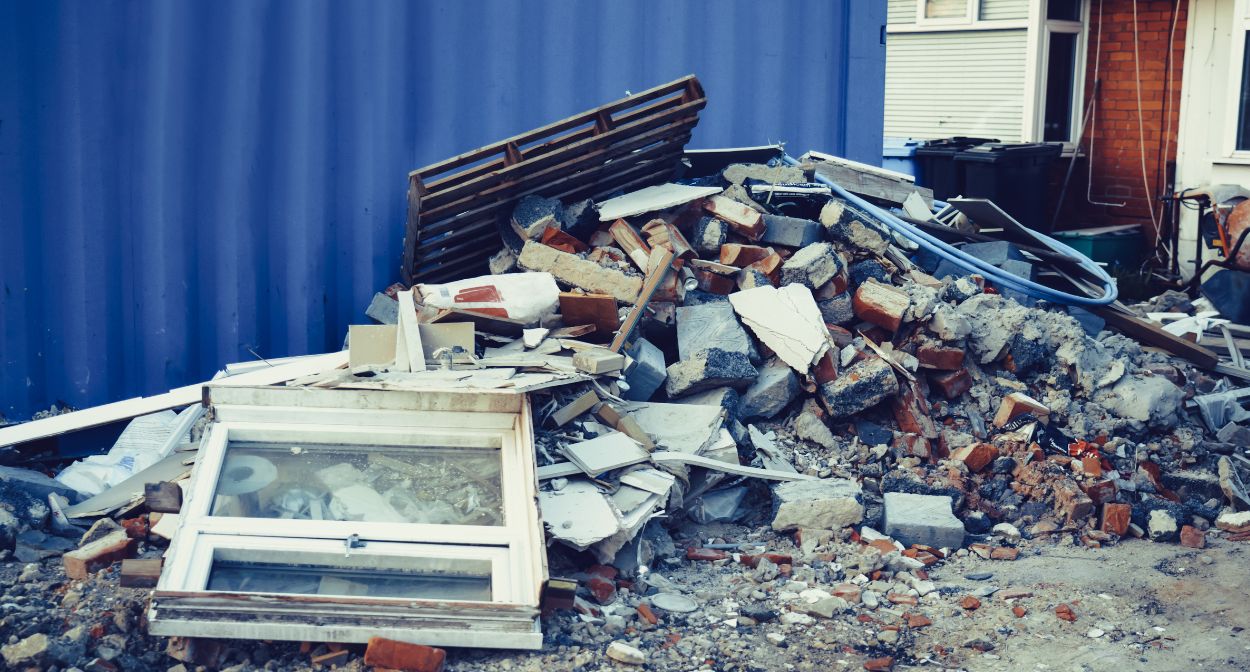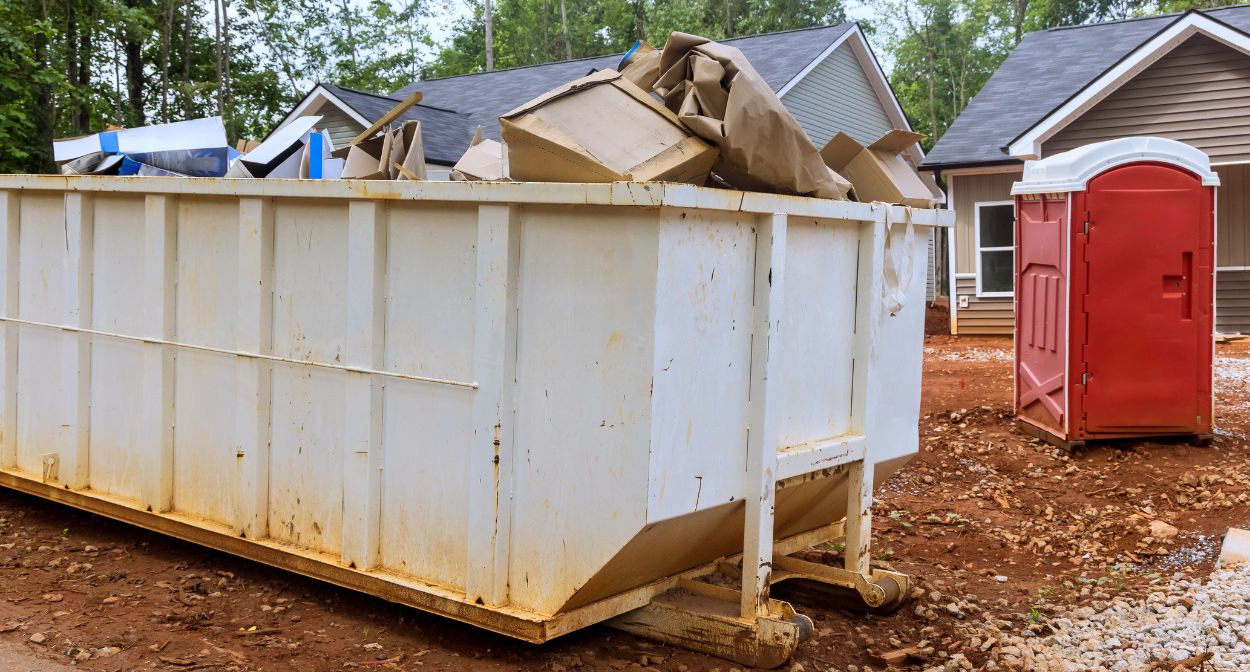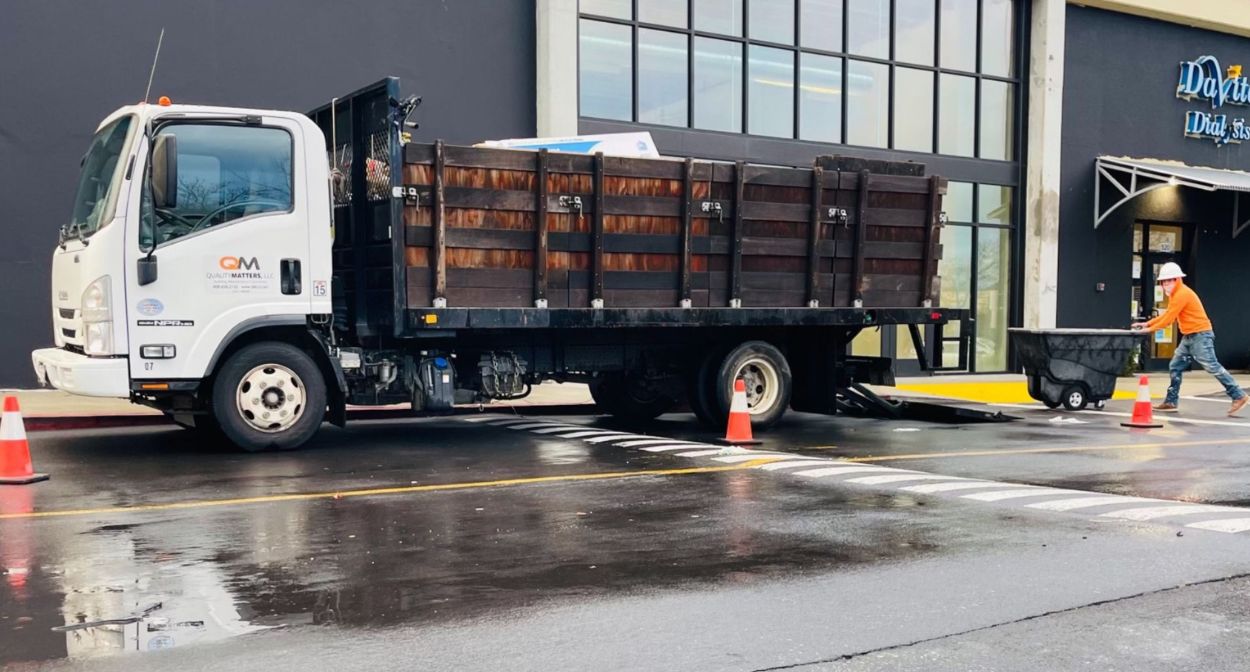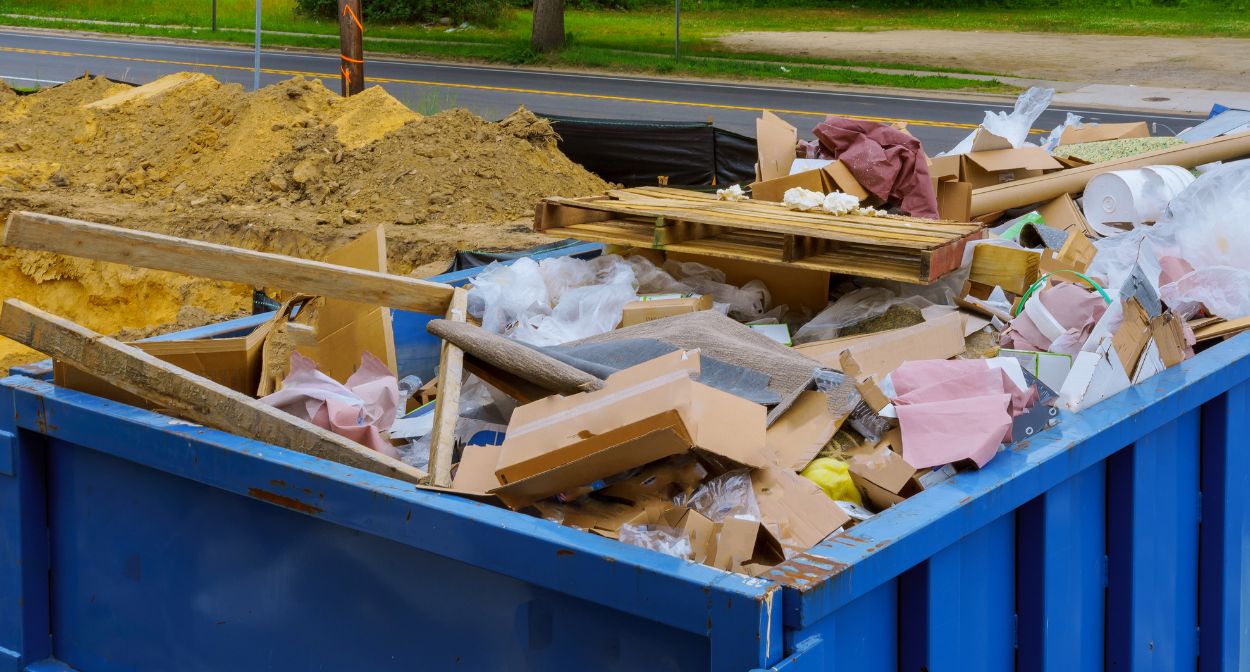Common Types of Construction Debris

1. Concrete and Asphalt
Concrete and asphalt are two of the most common materials in construction debris. These materials are typically generated during demolition projects, road construction, or renovations. Both concrete and asphalt are heavy and can take up significant space in landfills, so finding alternative disposal methods is often a priority.
2. Wood
Wood debris comes from framing, roofing, and other structural components. This type of waste can include untreated lumber, treated wood, and plywood. Wood is one of the more versatile types of construction debris because it can often be reused or recycled.
3. Metals
Metals, including steel, aluminum, and copper, are frequently used in construction. These materials often come from structural components, wiring, and plumbing. Due to the value of metals, recycling is a common disposal method, making it one of the more sustainable options.
4. Drywall
Drywall, or gypsum board, is another common type of construction waste, especially in interior renovation projects. Drywall debris can pose environmental risks if not disposed of properly, as it can release harmful gases when it breaks down in landfills.
5. Bricks and Masonry
Bricks, tiles, and other masonry materials are durable and long-lasting, but they can also be difficult to dispose of due to their weight and volume. Recycling or repurposing these materials is often the best way to handle them.
6. Glass
Glass from windows, doors, and other sources can be challenging to dispose of due to its fragility and potential for harm. Proper disposal methods include recycling or safely transporting it to facilities equipped to handle glass waste.
7. Hazardous Materials
Hazardous materials such as asbestos, lead, and certain chemicals are some of the most dangerous types of construction debris. Special handling and disposal methods are required to ensure the safety of workers and the environment.
Proper Disposal Methods for Construction Debris

1. Recycling
Recycling is one of the most effective ways to handle construction debris, particularly materials like metals, concrete, and wood. Many recycling centers accept C&D waste and can repurpose these materials for new construction projects. Recycling reduces the amount of waste that ends up in landfills and conserves natural resources.
2. Reusing and Repurposing
Reusing materials is another sustainable option. For example, wood can be repurposed for other construction projects or donated to organizations like Habitat for Humanity. Bricks and tiles can be reused in landscaping or building projects, reducing the need for new materials and minimizing waste.
3. Donating
Materials that are still in good condition can often be donated to local charities, non-profit organizations, or community projects. This helps reduce waste and supports the community by providing materials for those in need.
4. Landfilling
While landfilling should be a last resort due to environmental concerns, it is sometimes necessary, particularly for materials that cannot be recycled or reused. When using a landfill, it’s vital to ensure that the facility is equipped to handle construction debris and that all local regulations are followed.
5. Hazardous Waste Disposal
Disposing of hazardous materials requires special care. These substances should never be mixed with regular construction debris. Instead, they should be handled by licensed professionals transporting them to designated hazardous waste facilities. Proper disposal of hazardous waste is crucial to prevent environmental contamination and protect public health.
Conclusion: Effective Construction Debris Disposal Practices

At Quality Matters, LLC, we specialize in helping construction projects manage their debris effectively. Contact us today to learn more about our construction debris disposal services and how we can assist you in maintaining a clean and compliant worksite.

